MY PAPER, MONDAY MARCH 22, 2010, TRAVEL, PAGE A14
http://myepaper.mypaper.sg/ebook/web_php/fvbrowserjs.php?urljs=http://myepaper.mypaper.sg/ecreator/sphopf/mya220310cnd_opf_files/mya220310cnd.js&ver=Gen
BY ANDREW JACOBS
 PHOTO: HOT DIP: Taiwan’s northern end is a lush and mountainous region filled with hot springs that tourists and the Taiwanese flock to in order to bathe in their therapeutic waters. (PHOTOS: THE NEW YORK TIMES)
PHOTO: HOT DIP: Taiwan’s northern end is a lush and mountainous region filled with hot springs that tourists and the Taiwanese flock to in order to bathe in their therapeutic waters. (PHOTOS: THE NEW YORK TIMES)
THERE is nothing quite as bracing as the smell of rotten eggs in the morning.
The odour, which courses through the lobby and rooms of some of the finest hotels on Taiwan’s northern end, is a telltale indication that you’ve arrived in the hot-spring country – a lush and mountainous region that forms the island’s volcanic belly.
 PHOTO: http://cache.virtualtourist.com/2414898-Ching_Jing_Veteran_Farm_11-Taiwan.jpg
PHOTO: http://cache.virtualtourist.com/2414898-Ching_Jing_Veteran_Farm_11-Taiwan.jpg
Its therapeutic allure dates back a century, when Japanese soldiers wounded in the Russo-Japanese War of 1904 took solace in the sulphurous waters above the tectonic collision of the Eurasian and Philippine Sea plates.
These days, workday refugees from the mercantile bustle of Taipei, the island’s capital, flock here to soak away ailments, real and imagined.
The Taiwanese swear by its healing powers. “If you have athlete’s foot, you will be cured. If you have aches and pains, they will disappear,” said Mr Lin Tai Shan, a tea-shop owner, as he slipped into a steaming eddy at Bayen, one of 400 hot springs scattered across Taiwan.
“If you spend time in these waters, you will not need psychotherapy.”
 PHOTO: http://www.taiwanderful.net/files/u3/beitou-hot-springs.jpg
PHOTO: http://www.taiwanderful.net/files/u3/beitou-hot-springs.jpg
While hot springs are found throughout Taiwan, the quickest way to sample the waters is to go to Beitou – a mere half-hour subway ride from central Taipei – which was built by the Japanese during the 50 years they colonised Taiwan.
 PHOTO: echeng071214_0148252.jpg
PHOTO: echeng071214_0148252.jpgPoised on the outer edge of the capital’s sprawl and hugging the foot of Yangmingshan National Park, Beitou provides a lively base to explore both the urban and rural permutations of the hot-spring culture.
 PHOTO: http://www.taiwan-travel-experience.com/images/peitou-hell-valley.jpg
PHOTO: http://www.taiwan-travel-experience.com/images/peitou-hell-valley.jpg
A dozen hotels line Guangming Road, a serpentine byway that carries travellers from the hum of downtown Beitou to the cicada-filled buzz of forested hills.
 PHOTO: Hike amid the wilds of Yangmingshan park between baths and enjoy its verdant greenery.
PHOTO: Hike amid the wilds of Yangmingshan park between baths and enjoy its verdant greenery. PHOTO: BLISS: Beitou (top) provides a lively base to explore the urban and rural permutations of the hot-spring culture.
PHOTO: BLISS: Beitou (top) provides a lively base to explore the urban and rural permutations of the hot-spring culture.
The Broadway Hotel is typical, a bland high-rise offering simple rooms in two styles: Japanese style (with tatami mats for sleeping) or the conventional style with raised beds.
Most rooms feature oversized tubs with taps that spew out the stinky, sulphurous elixir that draws throngs of Taiwanese in the chilly winter months.
Nicer hotels also have sex-segregated communal baths where day-trippers and the more gregarious can mingle in large pools. Nudity is the norm.
 PHOTO: http://averageguys.files.wordpress.com/2009/07/wide-wallpaper-1920x1200-090.jpg
PHOTO: http://averageguys.files.wordpress.com/2009/07/wide-wallpaper-1920x1200-090.jpg
But Beitou’s main event is the municipal bath, an outdoor collection of cascading basins, lined with dark mountain schist, that forms the civic heart of town.
The bath is open until 10pm and has a democratic entry fee of NT$40 (S$1.80). Upon entering, the scene is multigenerational and bathers are fully clothed, with families hopping among pools that range from skin-scalding to teeth-chattering.
The atmosphere is festive, with plump teenagers doing sit-ups on raised stone sitting areas, while the elderly, immersed up to their earlobes, gossip over plastic canisters of cool tea.
Rule No. 9 on the wall – “It is inadvisable to spend more than 15 minutes in the hot spring” – seems to be universally ignored.
“The Japanese gave us this,” said one well-wrinkled matron, referring to the highly social culture of public bathing.
“They also built railroads, and schools and roads.”
 PHOTO: http://farm4.static.flickr.com/3049/2583020908_217dc9c2e6.jpg
PHOTO: http://farm4.static.flickr.com/3049/2583020908_217dc9c2e6.jpg
JAPANESE LEGACY
As an expatriate living in China, where the Japanese invasion and occupation are recalled with unrestrained venom, I found it jarring to hear such positive sentiments about Japan’s colonisation of Taiwan.
 PHOTO: http://img.wallpaperstock.net:81/fantasy-girl---spring-wallpapers_14995_1280x800.jpg
PHOTO: http://img.wallpaperstock.net:81/fantasy-girl---spring-wallpapers_14995_1280x800.jpgOne hotel manager offered another view, recalling how Japan turned Beitou into something of a comfort town for its soldiers. Taiwanese women, he said with some embarrassment, provided the comfort.
 PHOTO: http://static.guim.co.uk/sys-images/Guardian/Pix/pictures/2009/2/24/1235490807665/Taiwan-flower-festival-Ta-009.jpg
PHOTO: http://static.guim.co.uk/sys-images/Guardian/Pix/pictures/2009/2/24/1235490807665/Taiwan-flower-festival-Ta-009.jpg
“It took a long time for people to forget Beitou’s dark reputation,” he said.
When a bather’s skin becomes sufficiently pruned, he can always visit the Beitou Hot Spring Museum, occupying a lodge built during the Japanese era, or go to Hell Valley, a geothermal gulch with hissing vents and scalding ponds that still evokes comparisons to the afterlife.
 PHOTO: http://4.bp.blogspot.com/_OqpXFfOX7CU/Slafp-8sNyI/AAAAAAAAEdI/KwDwBikg6Mk/s1600/surprising-taiwan.jpg
PHOTO: http://4.bp.blogspot.com/_OqpXFfOX7CU/Slafp-8sNyI/AAAAAAAAEdI/KwDwBikg6Mk/s1600/surprising-taiwan.jpg
Next to Beitou’s honky-tonk, the wilds of Yangmingshan are positively bucolic. It became a national park in 1985, after centuries of drawing miners who sought the sulphur deposits for gunpowder. The main draws nowadays are bird-watching, hiking through bamboo groves and, of course, hot springs.
The waters at the public Lengshuikeng, a mandatory stop on the park’s hot-bath circuit, may translate to mean a “cold-water pit”, but it is still plenty hot at 40 deg C. Its ferrous, reddish-brown waters are a refreshing alternative to sulphur baths.
 PHOTO: http://mjbryan.com/FosbergD/pics/Koh%20Samui%20050.jpg
PHOTO: http://mjbryan.com/FosbergD/pics/Koh%20Samui%20050.jpg
In between baths, take a hike through Yangmingshan’s many trails, the top draw being Qixing shan, the tallest peak in Taiwan’s north and a haunting landscape of steaming fumaroles, wind-gnarled cedars and oceans of swaying silver grass. It is also a popular spot for mainland tourists.
 PHOTO: http://mjbryan.com/FosbergD/pics/Oregon%202008%20019.jpg
PHOTO: http://mjbryan.com/FosbergD/pics/Oregon%202008%20019.jpg
Since a 2008 accord between the two governments, 3,000 visitors from China have been allowed on the island each day for one-week tours. The influx has been a boon for Taiwan’s recessionary economy, as well as for the hot springs, which have seen their popularity rise.
 PHOTO: http://www1.pictures.fp.zimbio.com/Spring+Fever+Photocall+Cannes+Film+Festival+b1j3OsmqtROl.jpg
PHOTO: http://www1.pictures.fp.zimbio.com/Spring+Fever+Photocall+Cannes+Film+Festival+b1j3OsmqtROl.jpgLocals do not sneer at the mainland money, but they often gripe about a lack of politesse among the Chinese.
On a recent visit, a busload of tourists from Sichuan province arrived at Xiaoyoukeng, a steaming basin just below the peak. The Chinese were effusive about Taiwan. “We are brothers,” said a man stamping out his cigarette before climbing back on the bus.
“One day, we will be a single nation again. In the end, business will bring us together.”
 PHOTO: http://z.about.com/d/honeymoons/1/0/j/S/1/5WulaiKTH.jpg
PHOTO: http://z.about.com/d/honeymoons/1/0/j/S/1/5WulaiKTH.jpg
MAGIC OF BAYEN
After a thigh-straining, two-hour hike through rhododendron forests and volcanic rocks, it was time for Bayen, a venerable hot spring considered to be almost mystical. It is a 20-minute drive from Qixing shan, on a serpentine road that hugs a forested hillside and provides a distant view of the sea.
 PHOTO: fantasyX.jpg
PHOTO: fantasyX.jpg
To get there, head down the driveway that leads to a new high-end lodge and look for the dirt trail with the No Trespassing sign.
Locals say the police rarely intervene and, besides, the reward is worth the trouble: a hidden glen where a rivulet of boiling water meets the cold cascade of a mountain stream.
For years, a society of Bayen devotees have come to this spot to escape the commercial baths, with their entry fees and concrete basins.
They planted flowering clematis, built deep soaking pools with native rocks and even erected changing rooms out of wooden poles and swatches of colourful fabric.
It feels like a meticulous community garden, with volunteers even draining the pools weekly. “Smoke your cigarettes at the tail of the wind,” read one hand-painted sign. “Wash your hair at the tail of the river,” advised another.
After the succession of pipe-fed basins, there is something remarkable about the pools at Bayen, where the source emerges straight from the earth, and the pools, some exhilarating, some near scalding, are surrounded by an amphitheatre of green.
 PHOTO: http://www.wallcoo.net/celebrity/fukuoka_sayaka_01/images/wallcoo.com_Japanese_girl_fukuoka_sayaka_03la.jpg
PHOTO: http://www.wallcoo.net/celebrity/fukuoka_sayaka_01/images/wallcoo.com_Japanese_girl_fukuoka_sayaka_03la.jpgWith much of my clothing hanging from a branch, I eased into a swirling, steaming pond. After the initial sting, the heat proved to be an elixir, vanquishing aches from the hike and subsuming any lingering anxieties brought on by my life in Beijing. The overall effect was intoxicating.
There were half a dozen people already soaking in the pool. Everyone wore a knowing smile that said: Yes, you’ve discovered paradise.
Mr Liao Yan Chen, 68, a retired electric-company worker, first came to this spot as a seven-year-old, and he still makes the hour-long drive from Taipei at least once a week. He said the waters keep him healthy, sane and connected to nature.
“I sleep so much better after I bathe here,” he said. “I think the world would be a better place if everyone spent more time soaking in hot springs.”
NYT, Andrew Jacobs is a correspondent in the Beijing bureau of The New York Times.
 PHOTO: http://www.taiwan-travel-experience.com/images/peitou-hell-valley.jpg
PHOTO: http://www.taiwan-travel-experience.com/images/peitou-hell-valley.jpg
HELPDESK: 我的字典
Mountainous: 多山的 - duō shān de
Hot springs: 温泉 - wēn quán
Venom: 毒液 - dú yè
Mystical: 玄妙的 - xuán miào de
 PHOTO: TAIPEI, TAIWAN - JUNE 01: Actress Goo Hye Sun and actor Lee Min Ho and from Korean television drama "Hana Yori Dango" attend a press conference as part of the cast's visit to Taiwan at Grand Formosa Regent Taipei on June 1, 2009 in Taipei, Taiwan. (Photo by Tungstar/Getty Images)
PHOTO: TAIPEI, TAIWAN - JUNE 01: Actress Goo Hye Sun and actor Lee Min Ho and from Korean television drama "Hana Yori Dango" attend a press conference as part of the cast's visit to Taiwan at Grand Formosa Regent Taipei on June 1, 2009 in Taipei, Taiwan. (Photo by Tungstar/Getty Images)
http://nylesor.files.wordpress.com/2009/06/tcconfe.jpg
IF YOU GO HOW TO GET THERE
Check out flights from Singapore to Taipei on www.zuji.com. A search for April travel finds you flights on Jetstar and Eva Air, with prices starting at $617 (including taxes).
Taxis can be hired at the Xin Beitou subway station for NT$800 (S$35.28) for the day, depending on your negotiating skills.
 PHOTO: http://static.guim.co.uk/sys-images/Guardian/Pix/pictures/2009/2/24/1235490805269/Taiwan-flower-festival-Ta-007.jpg
PHOTO: http://static.guim.co.uk/sys-images/Guardian/Pix/pictures/2009/2/24/1235490805269/Taiwan-flower-festival-Ta-007.jpg
 PHOTO: http://yeinjee.com/wp-content/uploads/2008/06/travel-taiwan-cisingtan-001.jpg
PHOTO: http://yeinjee.com/wp-content/uploads/2008/06/travel-taiwan-cisingtan-001.jpg
WHERE TO SOAK
- Beitou Hot Spring Museum (Zhongshan Road, Beitou; 886-2-2893-9981). Admission is free.
- Beitou Outdoor Public Baths (886-2-2893-7014). Entry fee: NT$40.
- Lengshuikeng hot spring (886-2-2861-0036; ymsnp.gov.tw). Free.
- Yangmingshuwu (12 Chungshin Road, Yangmingshan; 886-2-2861-1444; ymsnp.gov.tw). Admission fee: NT$50. Call ahead for English-language tours.
- Yangmingshan National Park (886-2-2861-3601, ext. 271; ymsnp.gov.tw). Call well in advance for English-speaking tours.
 PHOTO: http://img.wallpaperstock.net:81/fantasy-girl---spring-wallpapers_14995_1680x1050.jpg
PHOTO: http://img.wallpaperstock.net:81/fantasy-girl---spring-wallpapers_14995_1680x1050.jpg
WHERE TO STAY
- Landis Resort (111 No. 237 Ger-Zhi Road, Yangmingshan; 886-2-2861-6661; landisresort.com.tw) offers stone and blond-wood refinement. Rates start at NT$7,000.
- The Broadway (250 Guangming Road, Beitou; 886-2-2895-6658; broadway-hotspring-hotel.com.tw) offers some Japanese-style rooms. Rates start at NT$900.
 PHOTO: http://i.ytimg.com/vi/BYCMUENg43o/0.jpg
PHOTO: http://i.ytimg.com/vi/BYCMUENg43o/0.jpg
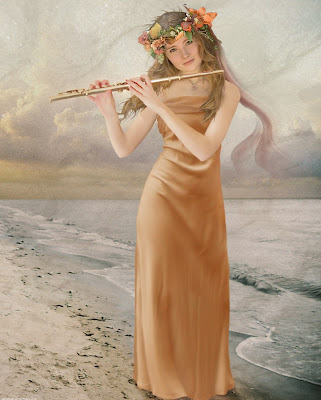 PHOTO: http://2photo.ru/uploads/posts/1/20090616/kadri-umbleja/16_06_2009_0155827001245135384_kadri-umbleja.jpg
PHOTO: http://2photo.ru/uploads/posts/1/20090616/kadri-umbleja/16_06_2009_0155827001245135384_kadri-umbleja.jpg
Reference











































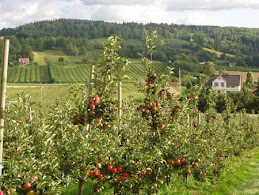










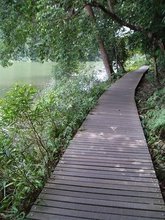







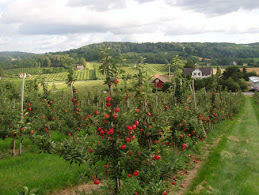



.jpg)
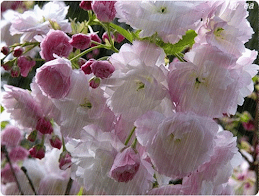.gif)
.jpg)

























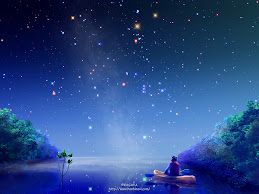

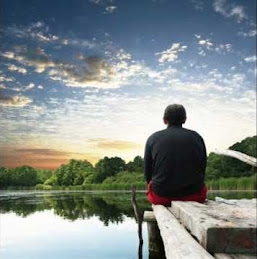




















%20-%20%E5%82%B7%E5%BF%83%E7%9A%84%E8%B7%AF%20(Sh%C4%81ng%20x%C4%ABn%20de%20l%C3%B9)%20-%20The%20Road%20of%20Sorrow%20(With%20Subtitle)_11.png)







